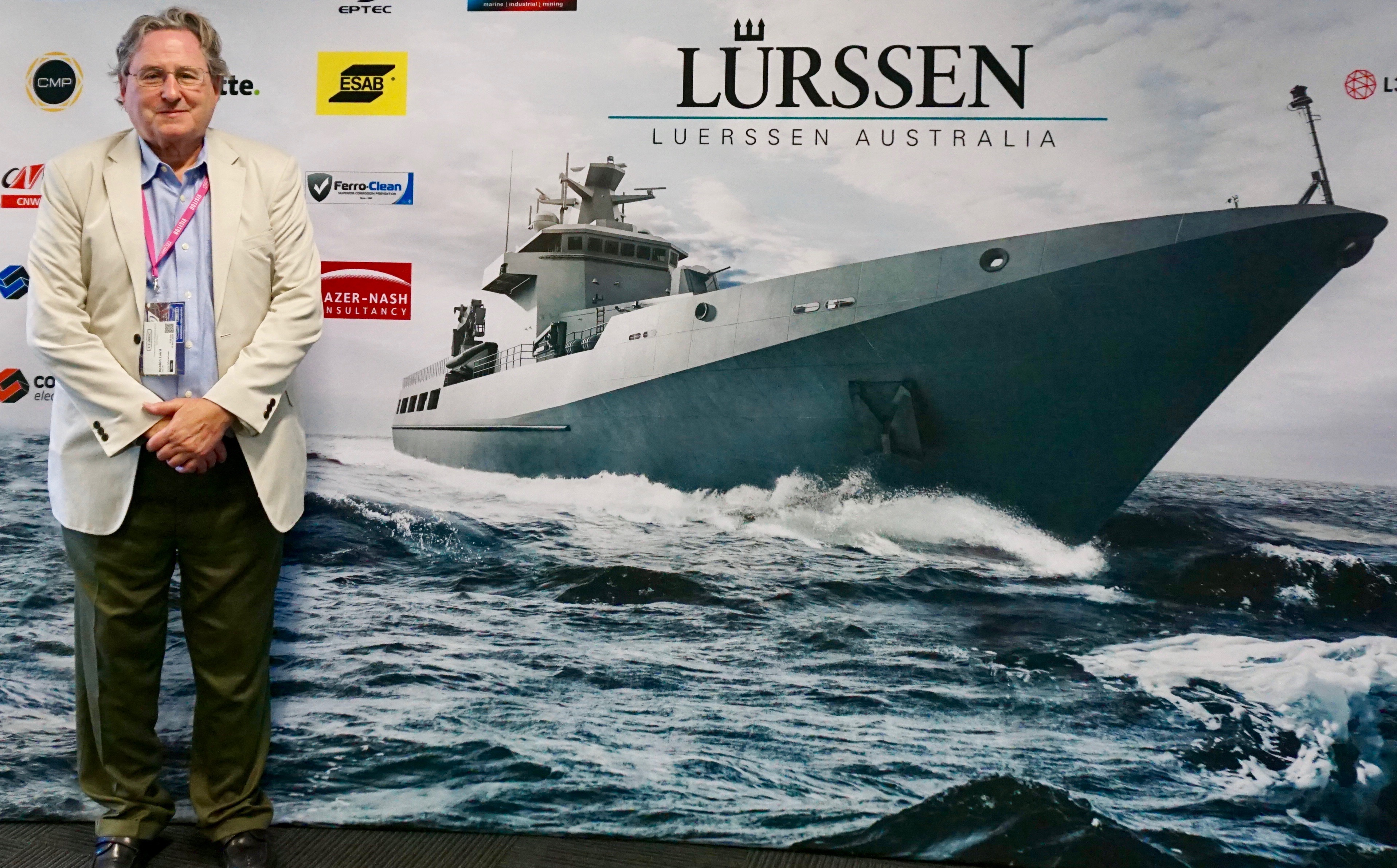The Australian Offshore Patrol Vessel: Shaping a Way Ahead for a “Continuous Shipbuilding” Approach
On March 10, 2020, I had the chance to visit CIVMEC and Luerseen at the Henderson shipyard near Perth, Australia.
CIVMEC and Lürssen formed a joint venture to design and build and provide ongoing production capabilities for the new build Offshore Patrol Vessel.

The joint venture was announced in 2018.
German shipbuilder Luerssen – the prime contractor in the Australian SEA 1180 offshore patrol vessel program – has formed a joint venture with Australian engineering and defense contractor Civmec.
The joint venture will be called the Australian Maritime Shipbuilding and Export Group and will play a major role in the construction of 10 of overall 12 offshore patrol vessels for the Royal Australian Navy. Additionally, the JV will explore possibilities of exporting its products in the region.
The announcement was welcomed by the Australian defense industry minister Christopher Pyne MP who said the joint venture was another positive step forward. “This is great news as the group will play a significant role in the Western Australian build of ten offshore patrol vessels using Luerssen’s proven design,” minister Pyne said.
“In November 2017, the Turnbull government selected Luerssen as the prime contractor to supply 12 OPVs to the Navy.”
“The whole project is worth around $3.6 billion and construction of the first OPV will start in South Australia later this year using ASC.”
“I commend AMSEG for their commitment to advancing Australia’s sovereign shipbuilding capability,” minister Pyne said.
“By investing in Australian skills and infrastructure, and looking at opportunities to export into the global naval market, AMSEG is signalling its intent to be a key player in establishing Australia as a competitive shipbuilding nation.”
Further information about the joint venture was provided by a May 26, 2018 story by Defence Connect.
The joint venture will be chaired by former Chief of the Navy, Vice Admiral (Ret’d) Chris Ritchie.
“This new company will be governed by an Australian board and operate under Australian management to build world-class naval vessels in best practice Australian shipyards,” Ritchie said.
“We will invest in Australian skills and infrastructure and transfer expertise from SEA 1180 prime, Lürssen Australia, to develop capability and support the foundation of a sustainable naval shipbuilding industry that is able to export to the global market.”
Executive chairman of Civmec and AMSEG director Jim Fitzgerald said the formation of the new company was further evidence of the commitment the SEA 1180 industrial team had made to materially growing Australia’s shipbuilding industry.
“This is a huge step forward for Australia’s shipbuilding industry. It is an exciting development that will fully underpin the development of the new state of the art shipbuilding facility at Civmec’s Henderson headquarters,” Fitzgerald said.
Tim Wagner, managing director of Lürssen Defence and AMSEG director, echoed these sentiments.
“Lürssen has always believed in the vision of the Australian government’s Naval Shipbuilding Plan and wanted to not only be a part of it, but to help make it a reality,” Wagner said.
“We set up Lürssen Australia in May 2017, today we have announced this important joint venture and later this year we will open applications to our program, which will fund scholarships and apprenticeships for aspiring Australian shipbuilders. The future of Australian naval shipbuilding looks bright.”
The Commonwealth of Australia is launched on a path to shape new build ships for their Navy and the new build approach is not just about putting hulls in the water but about shaping integrability.
As then Chief of the Royal Australian Navy Vice Admiral Barrett commented during a 2016 presentation to the Williams Foundation: “We are not building an interoperable navy; we are building an integrated force for the Australian Defence Force.”
The visit to Henderson was a chance to see the new shipbuilding approach in action.
And because the OPV is the first of the new class of ships, with the Air Warfare Destroyer and the new build attack submarine to follow, the OPV project is a template for shaping a way ahead with regard to the new approach.
The Australians have of course built ships before, the most recent one being the Air Warfare destroyer. These efforts have clearly been important, but have largely been replication in the Australian setting of a build approach launched, developed and delivered elsewhere,
With regard to the Air Warfare destroyer, the ship is a variant of the Spanish ship, which itself was a product in terms of the combat system in the ship between the United States and Spain. The technology transfer to build the Hobart class came from Spain and the United States and the Australians replicated those skill sets in building out this modern warship.
The ”continuous shipbuilding” approach is much more ambitious.
It is about shaping core capabilities within Australia itself to build not just a one off series of ships but to put in place capabilities which can be used in a much wider build process which, in turn, will create the skill sets for the ongoing sustainment and modernization of the various ship classes to be built now and in the future.
As the role of the shipbuilder changes significantly in the systems dominant world, in which software upgradeability is a fact of life, continuous modernization is a key requirement for combat success
The OPV is the launch program in this regard, and will shape the core template going forward.
The visit to Henderson provided significant insights into the approach and how the joint venture was addressing the reality of creating a new shipbuilding process.
In my next two pieces, I will address how each of the joint venture partners is shaping a way ahead, with Lürssen in the lead.
How are the two companies shaping a new shipbuilding approach for Australia?
See the following as well:

